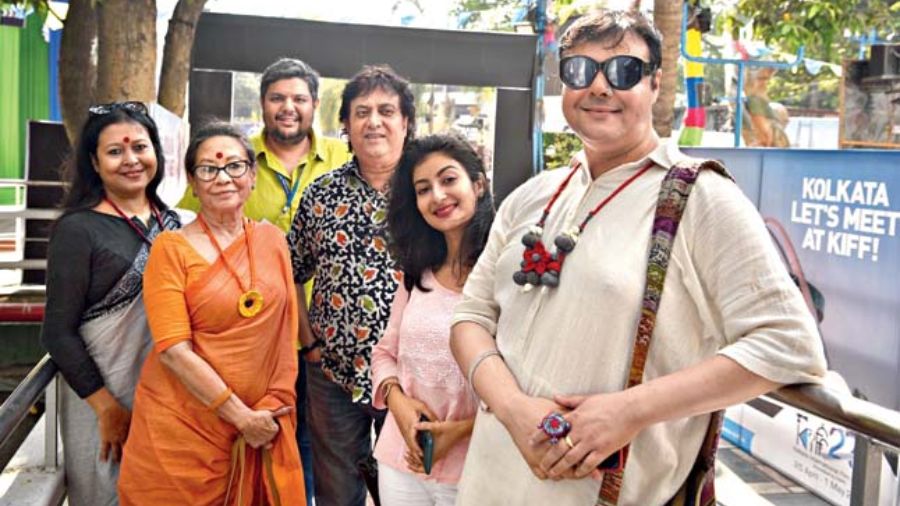The Rabindrasangeet Tumi robe nirobe played on esraj in the film Belaseshe was an unforgettable scene beautifully essayed on screen by interdisciplinary artiste Sujoy Prosad Chatterjee’s character Bijon. Now, Nandita Roy and Shiboprosad Mukhopadhyay’s film, titled Belashuru, is all set to release this Friday. Ahead of the release actor Sujoy Prosad Chatterjee talks to The Telegraph about his role, playing the esraj yet again and his recent directorial venture with the film Home that was screened at KIFF this year:
Belashuru will be releasing this week. How excited are you about this release?
Belashuru was a different trajectory for me. After Belaseshe, we have all grown up and evolved as human beings and artistes. We did not know it would be the last film of Soumitra Chatterjee and Swatilekha Sengupta. We absorbed the best of their performances in this film. It was a lure for me to do Belashuru. Working with Nandita Roy and Shiboprosad Mukhopadhyay is a learning in so many ways. And working with Ritu (Rituparna Sengupta) is always great because we have so much fun on set. There are so many things that make a marriage work and one of them is the unique friendship of Bijon and Malashree that was there in Belaseshe and it evolved in Belashuru.
What did you like best about playing Bijon’s character again in Belashuru?
On a lighter note, I just felt it was nice I could hold the esraj better. (Laughs) I think I have a better grasp over the esraj now. Shibu and Nanditadi allowed me to hold the esraj better and arranged for me to learn it,too.
Your short film Home was screened at KIFF this year. What is your idea of a ‘home’ and has it changed in any manner after reading Arundhati Subramaniam’s poem? In what ways did you relate to it that inspired you to translate it on screen?
My idea of ‘home’ is where I exist, experience and evolve. This poem by Arundhathi Subramaniam lived with me for a few years before it spread wings through creative expressions. What struck me in this poem is the interplay of silence, emptiness, refuge and hope. Once the images started coming to me, it almost felt like a fleet of dreams. This happened through a game of words in one of my sessions for my interdisciplinary arts collective SPCkraft.
What was the most fulfilling and challenging part of interpreting it on screen?
The mentor to this film Sohag Sen and my DOP Modhura Palit helped me to string these images, which were otherwise overlapping in progress. The challenging part was to make a silent film out of a few lines of a non-linear narrative. The fulfilling part was to work with a bevy of some of the best actors in town. Apart from everything, the music score by Subhen Chatterjee, the way he is marrying the silences was also a fulfilling experience for me for this film.
You chose black and white to beautifully present the interplay of eros and emptiness that the place called ‘home’ entails. Any specific reason for that?
I remember when I spoke about keeping the film in black and white, our wardrobe designer Suchismita Dasgupta was the first one to express her happiness. I guess her work became more complex and she loves being challenged. The journey I was trying to paint would have been incomplete without the choice of black-and-white. I think my film is quite stark mostly except for a few lyrical escapades. And home entails that.
Picture: B. Halder
